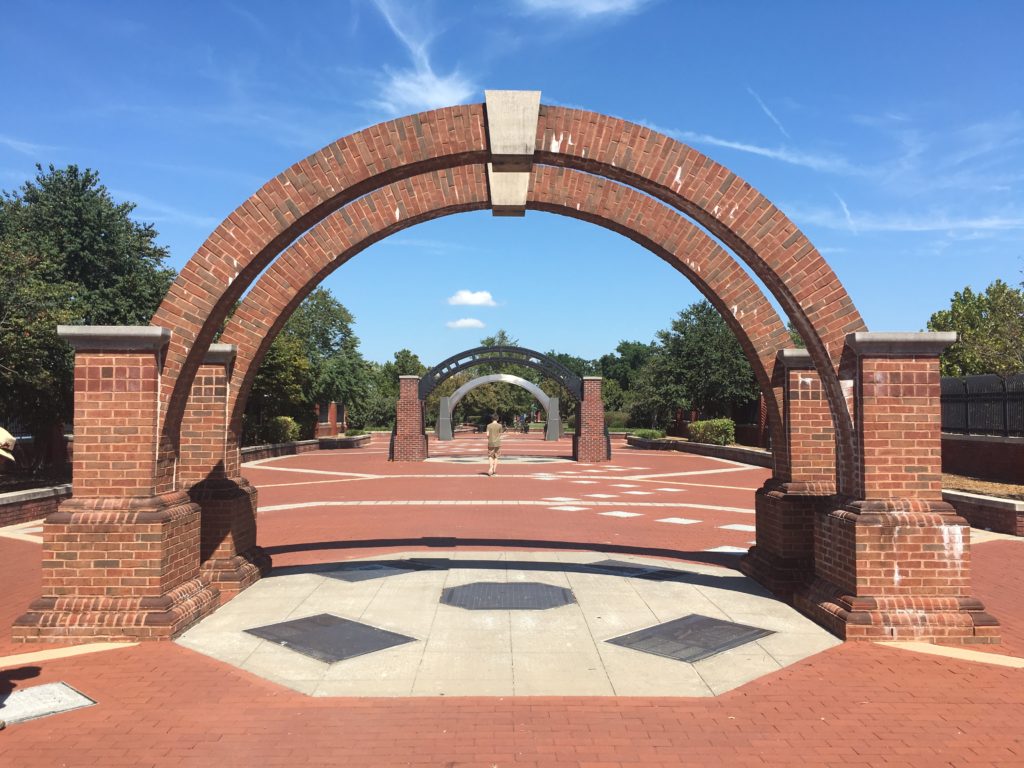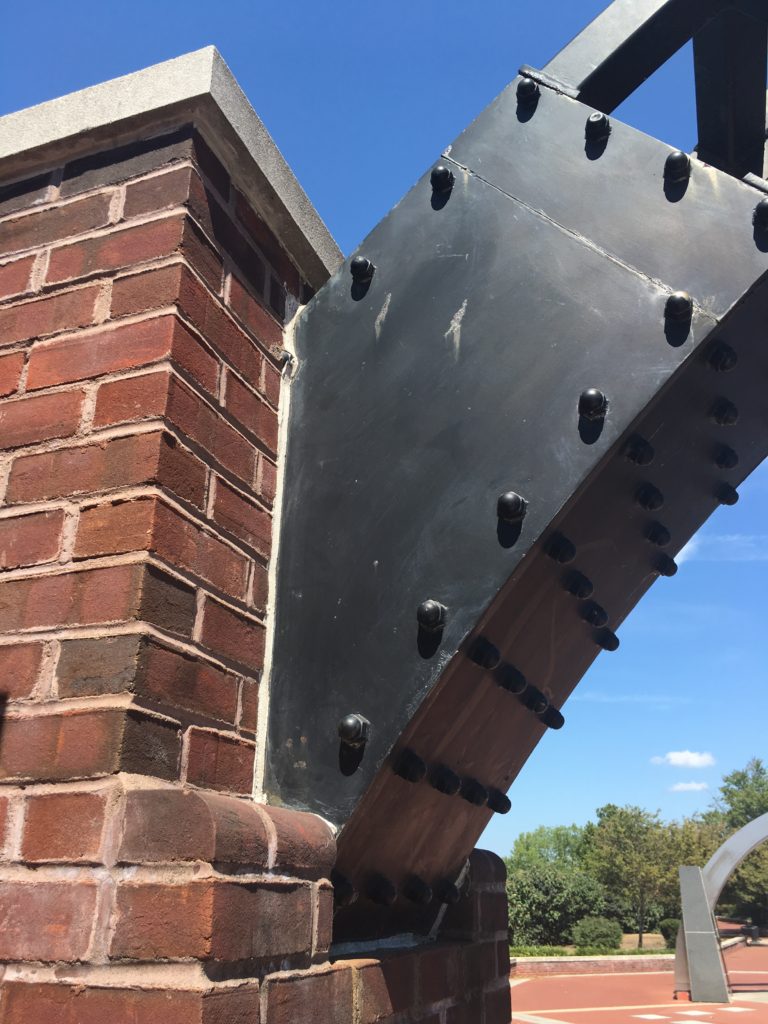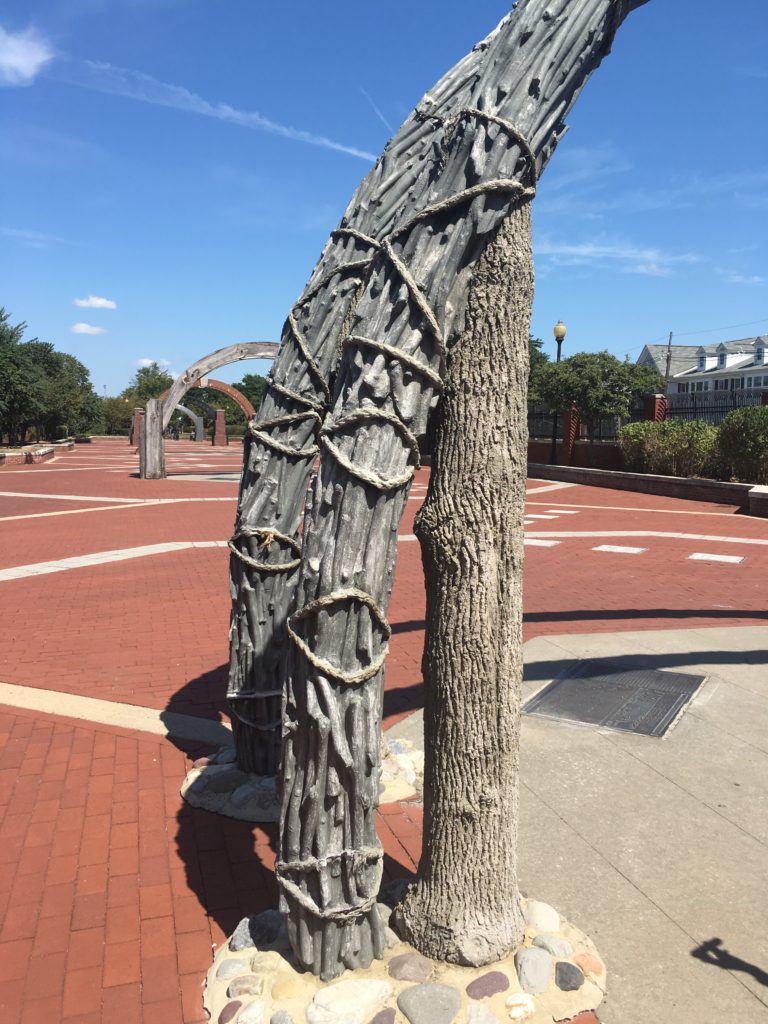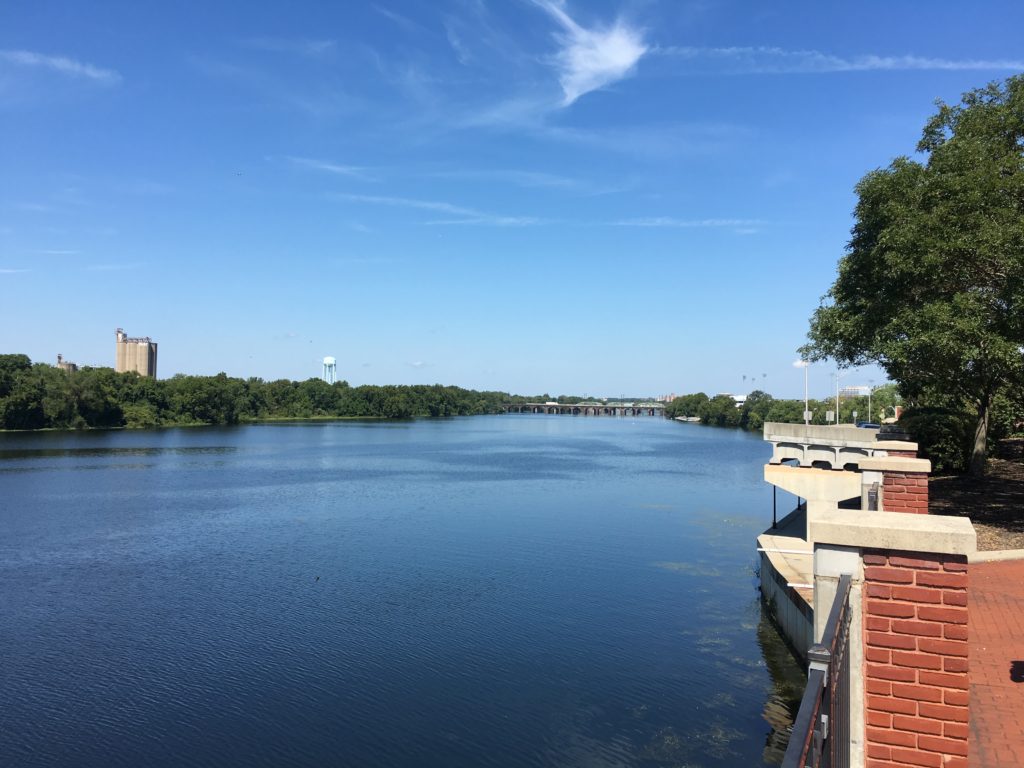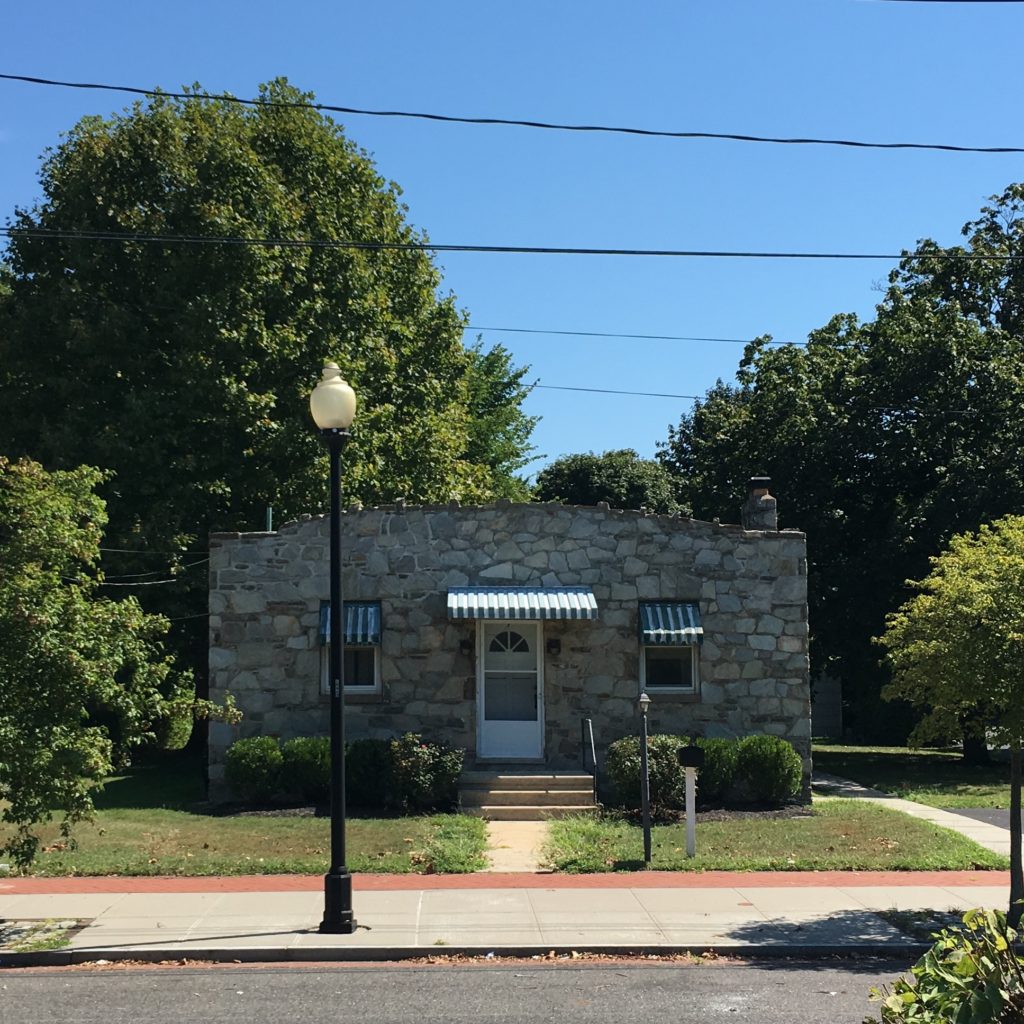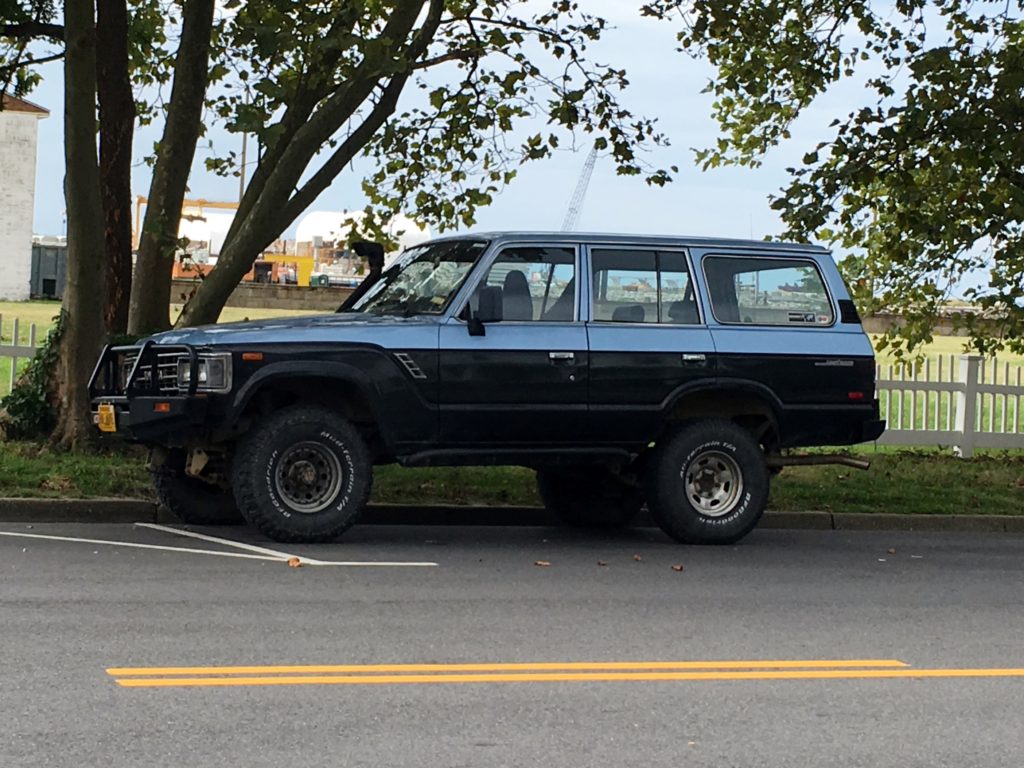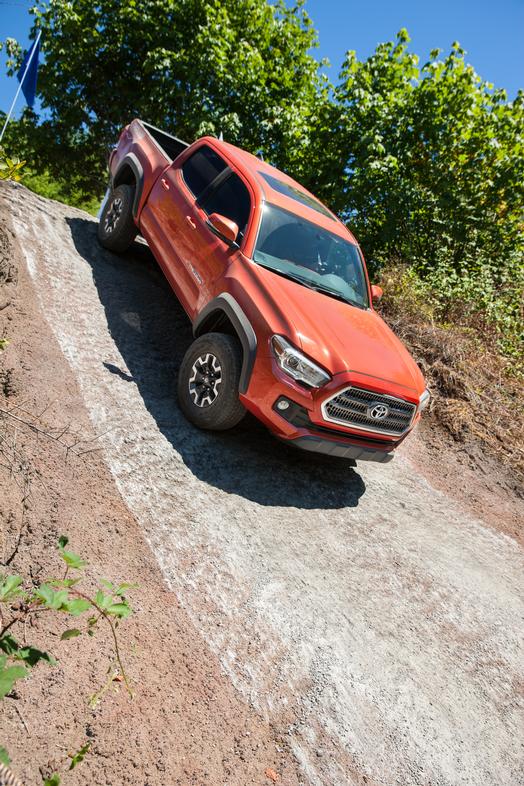The South Riverwalk Park, or Deck Park, was built on top of the Route 29 Tunnel along the Delaware River in Trenton, New Jersey. The design of the park was informed by the archaeological and historical research conducted prior to construction of the tunnel. A series of arches made of different materials (Steel, iron, brick, wood) represent each century of historic occupation of Trenton. The first arch evokes the construction techniques used by Native Americans for thousands of years before Europeans arrived. Plaques inset into the ground record the many milestones of local history. The south end borders Riverview Cemetery; at the North end, steps lead down to Waterfront Park, the home of the Trenton Thunder, the AA affiliate of the New York Yankees.
